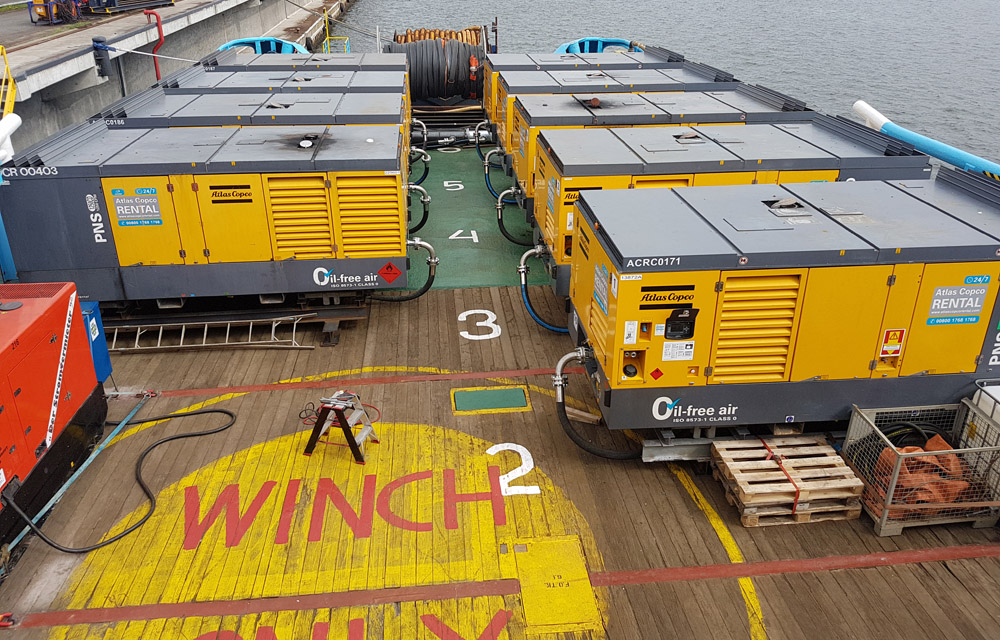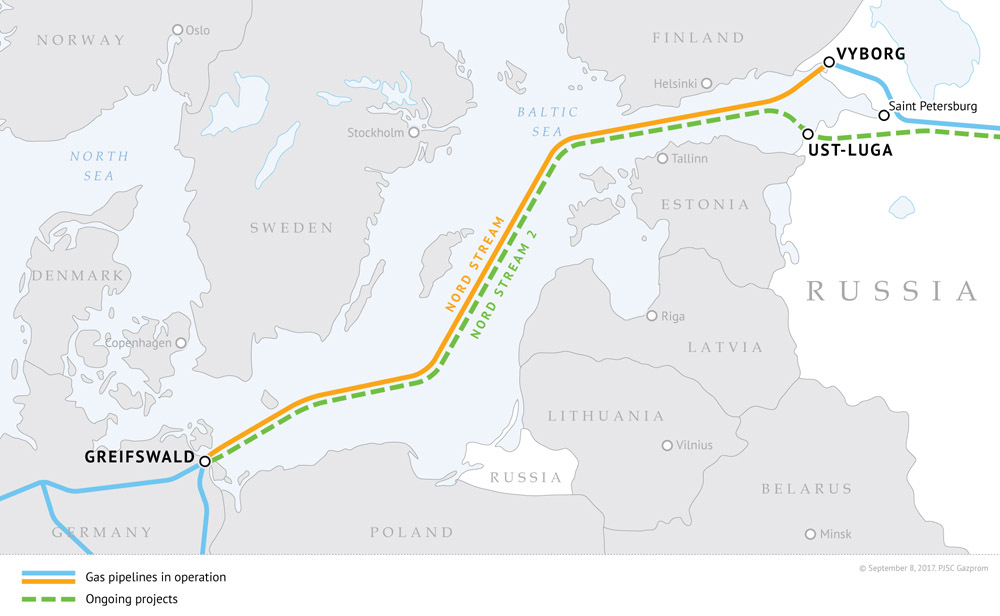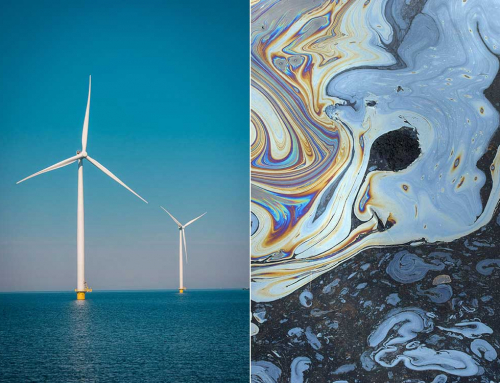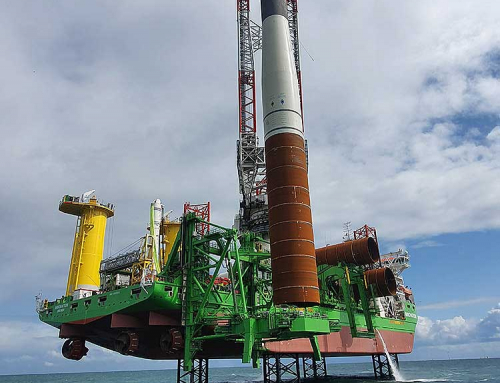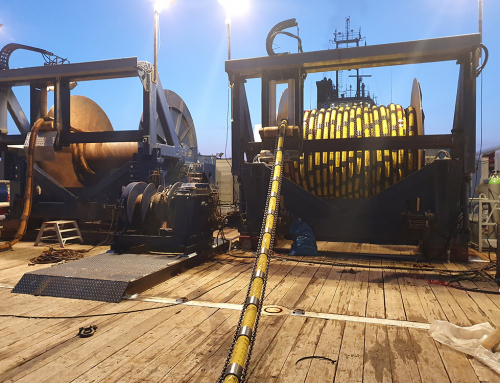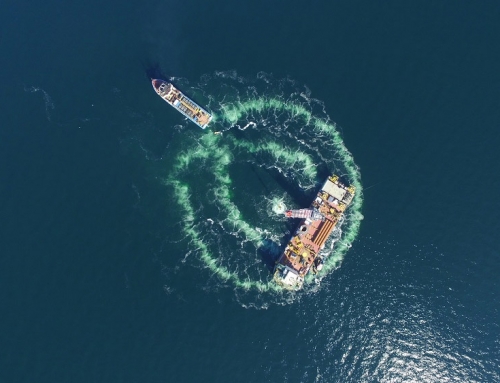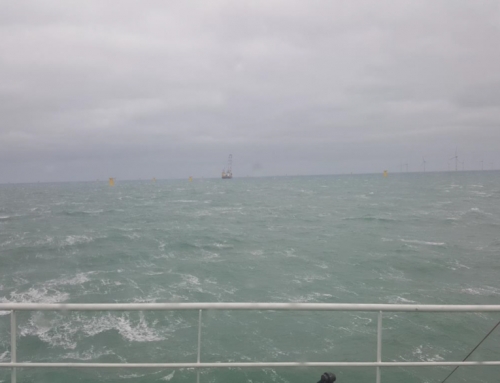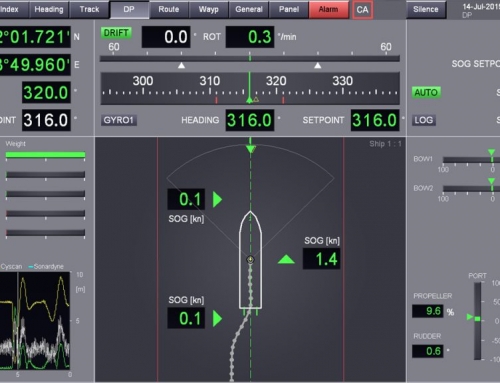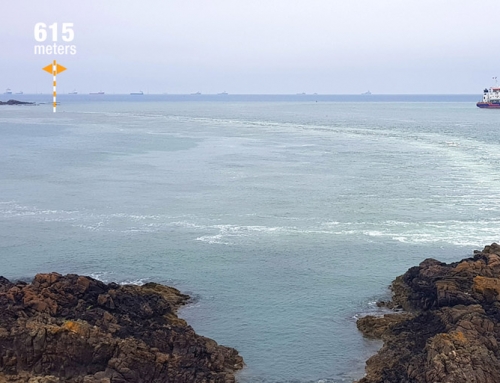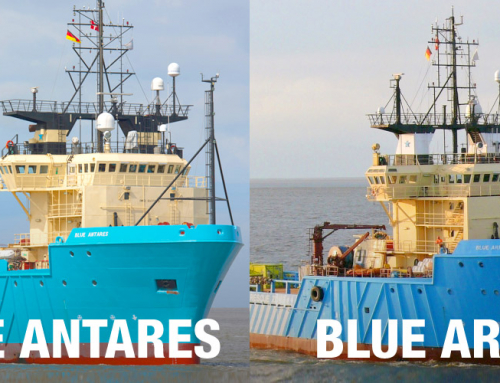The BLUE ANTARES is one of our NHDV (Nozzle Hose Deployment Vessel). It is equipped with the BIG BUBBLE BARRIER. She is currently accompanying the UXO disposal along the Nord Stream Pipeline route in the Bay of Finland. Compressors on deck deliver oil-free air of class 0 / ISO 8573.1 with a pressure between 6 and 24 bar. This enables the BIG BUBBLE BARRIER to be operated in water depths of up to 80 m and more.
In 2013, the concrete planning of one or two further 1250 km long strings with a 1200 mm diameter, essentially parallel to the two existing strings, from Russia to Germany (landing point Lubmin or Vierow) began. With the construction of the other two strings, the Nord Stream Pipeline’s annual capacity would double to 110 billion cubic meters of gas. The feed pressure is 220 bar on the Russian side and 110 bar on the German side. The wall thicknesses are adapted to this pressure curve.
Tremendous construction logistics required
A total of 200,000 pipes, every twelve meters in length and weighing around twelve tons, were required for the (previously) two-strand pipeline. The first line was supplied with 75,000 pipes by Europipe (Mülheim / Ruhr) and 25,000 pipes by the Russian manufacturer OMK (Wyksa). Every week, 15 freight trains with 100 pipes were driven through Germany by DB Schenker Rail to the Sassnitz (Mukran) ferry port. In Russia, the large pipes were transported by the RŽD to the Finnish seaport of Kotka.
Concrete as extra gravity
Special works in both seaports provided the steel pipes with concrete. So they were made to double their mass of 25 t to ensure that the pipes did not float despite the buoyancy of the gas. In this way, the pipes weighed down were shipped from Mukran to the Swedish interim storage facilities at Karlskrona and Slite, and from Kotka to the Finnish interim storage facility in Hanko. A total of five pipe bearings was chosen so that the distance to a pipe laying point did not exceed the 100 nautical miles mark. This allowed the number of pipe feeder ships to be limited to three. The laying of the first line began in spring 2010 with a special pipe-laying ship.
Strategic advantages through the Nord Stream Pipeline
Thanks to the Baltic Sea pipeline, Germany has secured contractual access to Russian gas reserves and several strategic advantages. There are no transit countries, and the associated potential political tensions could have a negative impact on deliveries to Germany. Because of the higher emissions from traditional domestic coal-based power generation and the agreed nuclear phase-out, natural gas is a useful alternative energy source.


